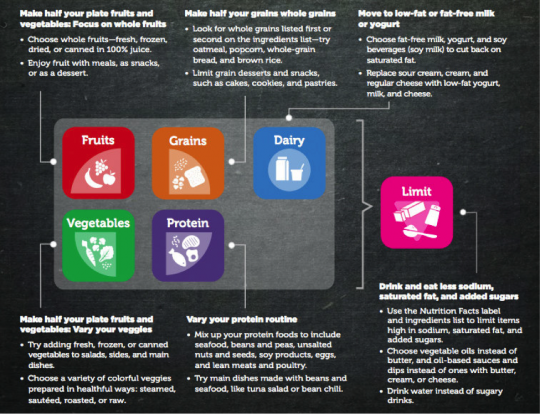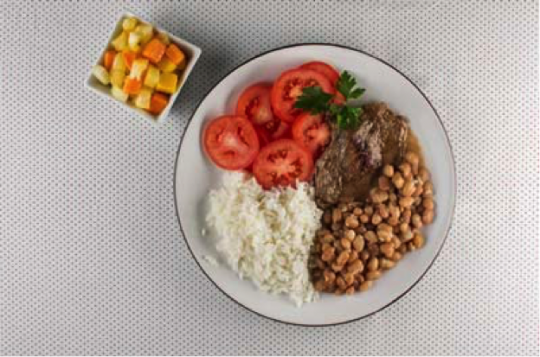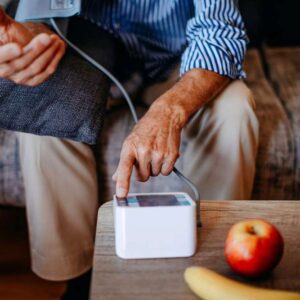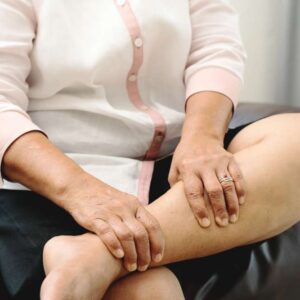
The New USDA Dietary Teaching Tools Include No Food
- The USDA substitutes pixelated shapes for food on its new answer to the food pyramid
- Water icon? No way. No precise beverage suggestions for the U.S. despite public health requests
- If you want to learn how to eat actual food, go to Brazil.
Dear Reader,
The USDA launched new Dietary Guidelines last Thursday.
The USDA reviews and updates the guidelines every five years. Revisions stem from a systematic review of food, public health, and nutrition studies conducted between 2010–2015.
Considered to be the U.S. government’s official voice on what you should eat, the guidelines determine things like food nutrition labels and school lunches and serve as teaching guides for proper nutrition.
Since the dietary guidelines document is a bit wordy and uses complex ideas like “A Social-Ecological Model for Food and Physical Activity Decisions,” the USDA launched an infographic called MyPlate and a tipsheet called MyPlate, MyWins alongside the guidelines.
The goal of MyPlate is to illustrate what portions should look like on a dinner plate. This image will be in schools, hospitals, and other public places, reminiscent of the old food pyramid.
While the concept seems simple and effective, it was poorly executed.
Today, we will use the new sugar guideline as an example to take a closer look at the MyPlate, MyWins tipsheet and the MyPlate infographic.
Bittersweet Suggestions
The 2016–20 version suggests Americans limit their sugar intake to 10 percent of their daily diet. This equals about 12 teaspoons.
Currently, 23 teaspoons of sugar is the daily average for many Americans. The new guideline requires many to slash their daily sugar consumption in half based on a 2,000-calorie diet.1
And while this new dietary standard is much clearer than the 2010 loose suggestion of “reduce the intake of calories from added sugars,” it remains a far cry from what the American Heart Association (AHA) considers a healthy amount of daily sugar.2
In fact, the AHA suggestions no more than six teaspoons of sugar for women, half of the new USDA recommendation, and nine teaspoons for men.2
Here’s a common issue — a 20 oz. Coke has 15 teaspoons of sugar in it.
If a person drinks just one of these conveniently vending machine-sized sodas, they are instantly over the USDA sugar suggestion by one-third, and at the combined sugar intake for a man and a woman by AHA regulations.
So if you look at MyPlate, it appears as if the USDA took a step in the right direction — obscure, but still in the right direction on the soda issue.
Even though it’s in the limit category and not a part of the actual meal, the MyPlate tipsheet plainly states, “Drink water instead of sugary drinks.”

Notice the last bullet under the “Limit” box.
Source: United States Department of Agriculture.
This seems like a win for public health.
And in a way, it is. But it’s like placing fourth in an Olympic event.
Especially since a panel of nutrition experts and public health scientist begged the USDA to not just say “drink water.” They requested the USDA add a water icon to the official MyPlate infographic.4
This the current edition:
![]()
Not only is there no water icon, there is no beverage icon at all.
Which brings us to the biggest issues with the USDA’s tipsheet and infographics — why are some food/beverage categories missing, and why are there computer-generated icons and not images of actual food in these teaching tools?
Protein doesn’t look like a pixelated purple triangle! It looks like a steak or bowl of beans.
How can the government expect us to know what to eat if they can’t even show us food!
Particularly when sugar, the biggest dietary culprit in America, isn’t even represented on the plate.
This makes no sense.
I am not advocating for sugar as main food group but it is fact that many Americans will continue to drink soda and eat sugary sweets.
Why not show us what is an appropriate amount?
Not to mention depictions of actual-sized examples may help people make better choices. Perhaps you would choose a 6 oz. Coke containing only a fraction of the sugar of the 20 oz. blood sugar-blasting version if you knew what that looked like or could make a comparison.
Or better yet, perhaps if you could see that a banana is better choice than a soda, you would choose the banana.
Bottom line: It is very hard to understand a proper portion size if all you are looking at is a Tetris-like dinner plate graphic where all of the food groups are not symbolized.
And it seems the experts agree.
Marion Nestle, a New York University nutrition professor, sums it up to NPR :
It’s ugly and it’s hard to read.
And she is right.
Nestle went on to explain to NPR she wishes “the government’s visual messaging on what Americans should and shouldn’t eat was much more explicit.”5
Other countries, like Sweden and Brazil, have more user-friendly guidelines. These easy-to-follow instructions and pictures of actual food make for valuable teaching tools themselves and eliminate the need for supplemental tip sheets and infographics.
In fact, Brazil even provides meal suggestions. Here is what lunch looks like in Brazil:

Tomato salad, rice, beans, grilled beef, and fruit salad.
Photo Credit: Brazilian Dietary Guidelines.
Wow, the fruit salad didn’t even make in on the plate and I still clearly understand the portioning!
While this doesn’t have a direct example of sugar on the plate, the guidelines include easy yet thorough explanations of high-sugar foods and also explain that fruit has natural sugars. But the best part: All of their meal photos include appropriate and relatable fruit serving sizes.
And they make helpful suggestions like “eating in company,” instead of the aforementioned USDA “A Social-Ecological Model for Food and Physical Activity Decisions” advice.
If you want to see more meal suggestion involving actual food, you can download a copy of the Brazilian Dietary Guidelines here.
I suggest it over the USDA’s MyPlate any day.
The full version of the USDA guidelines does offer a few serving suggestions with pictures for cup and ounce equivalents and has a chart of a breakfast meal, but no pictures of plated meals.
If you have anything to say about the new dietary guidelines, drop me a line. Nmoore@lfb.org
Live well,

Natalie Moore
Managing editor, Living Well Daily
Sources
[1] Sugar: Too Much of a Sweet Thing
[2] Dietary Guidelines for Americans 2010
[3] Obesity Rates & Trends Overview
[4] What Might Be Missing From MyPlate? Water
[5] Uncle Sam Just Told Us To Drink Water, Not Soda. You Might’ve Missed It
[6] Dietary Guidelines for the Brazilian Population
Written By Natalie Moore
Natalie Moore is a dedicated health researcher with a passion for finding healthy, natural, and science-based solutions. After a decade of direct healthcare experience in western and natural medicine, she was involved in public health research before joining Living Well Daily.
View More Free Articles
The 5 Health Numbers Your Doctor Wishes You'd Track
Have you ever been told you should “advocate” for yourself when it comes to your healthcare and wondered what that really means? It’s not just a buzzword—it’s a powerful concept that empowers you to take charge of your own health journey. In fact, it could save your life. Being your own best health advocate starts...
Do THIS Every 20 Minutes to STOP Digital Eye Strain
Our eyes are under assault—they are the true victims of our current digital age. And it’s because we are constantly glued to screens… phones, tablets, computers, TVs—you name it. Unfortunately, that screen time is taking a serious toll. Digital eye strain affects millions worldwide. In fact, up to 50 percent of computer users could develop...
Mailbag: The Calcium Mistake That's Hardening Your Arteries
“What type of calcium is best to take with bisphosphonates for osteoporosis? I know some varieties can build up in arteries. Thanks for the help.” —Bone Builder Hi Builder, When a patient asks me about calcium, I ask them a peculiar question in return… “Ever wonder how elephants and giraffes build and maintain their massive...
Doctor-Approved Method to Ditch Blood Pressure Meds
In a world where drug solutions dominate healthcare, it’s refreshing to discover that best remedies sometimes don’t involve a single pill. A groundbreaking study shows simple relaxation techniques could be your secret weapon against one of America’s deadliest health conditions. Best of all? It’s free, easy to start right away—and your results are bound to...
Trouble Hearing? Your Heart Could Be at Risk
With research exploding and data pouring in, scientists are uncovering some weird (and surprisingly helpful) health connections. Today’s odd couple? Hearing loss and heart failure. Turns out your ears and your ticker are more connected than you ever imagined. A major study published in the journal Heart looked at over 164,000 people for nearly a...
Stay Up Late? It Could Destroy Your Mental Health
If you dread mornings but come alive at night, there’s concerning new research you need to know about. A recent study found that “night owls” are at higher risk for depression. But before you rush to set your alarm to get up with the sun tomorrow, there’s more to the story… Chronotypes are essentially your...
Go from Flabby to Fit with this Common Vitamin
If you’re like many of us, you woke up one day, looked in the mirror, and realized you’re no spring chicken anymore. Even worse—when you weren’t paying attention—it seems you somehow misplaced the muscles of your youth and have gone from fit to flabby. Aging has a way of humbling us like that. But scientists...
Seasonal Allergy “Off Switch” Discovered in the GUT
“Doc, why am I suddenly suffering from seasonal allergies when I’ve never had them before?” It’s a question I get all the time—and my answer might surprise you. Stop looking up at the trees—and start looking down at your gut… Your sneezing fits, itchy eyes, and runny nose might have more to do with what’s...
“Canary in the Coal Mine” Test Sniffs Out Brain Issues Early
One of the most common questions I get is how to tell if you’re starting to experience cognitive decline. I get it—losing your memory is scary, especially when it sneaks up on you. But here’s some exciting news that might put your mind at ease. A fascinating new study suggests that your nose might be...
BEAT Stubborn Leg Swelling Without Dangerous Diuretics
“I need help with edema.” —Swollen Hi Swollen, When patients complain of edema—fluid retention that causes feet, ankles, and legs to swell—I explain that, while conventional medicine immediately prescribes diuretic drugs, nature offers us effective solutions we can try first. I’ll share those in just a moment, but first, let’s take a quick look at...









